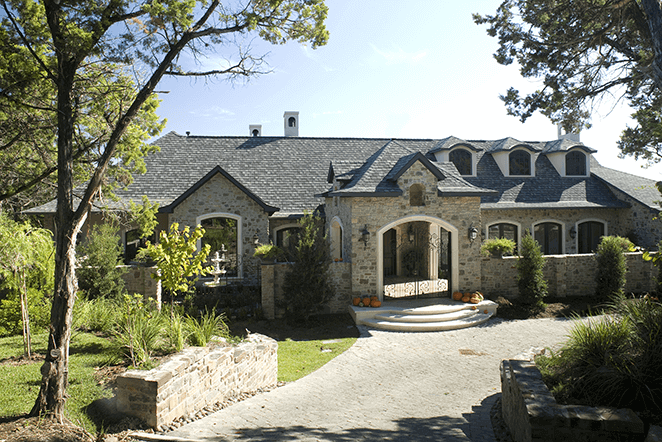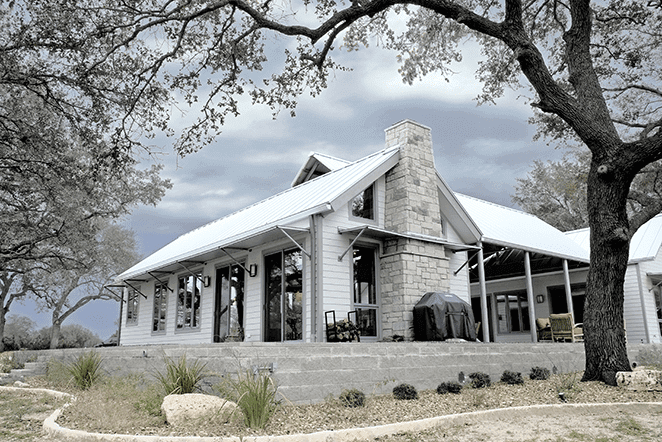
Most people would not describe financing a home as an easy process. And when you’re looking for a loan to build a custom home, there are even more items to juggle. Understanding the financing process for a custom home will help you to prepare so your project will have a better chance for approval. These five steps will help you make your custom home a reality.
1. Get Your Numbers Straight
When you are building a dream home, your head may get stuck in the clouds while imagining its luxury kitchen appliances and the extravagant pool parties you’ll throw there. While it’s helpful to plot out the features you want in your home, settling on the price you want for your custom home anchors your vision in reality. Crunching the numbers is also great preparation for your loan application. Evaluating the following items will help you arrive at your magic number:
- Income documents
- Bank statements
- Estimated personal budget needs for the build period
- Survey of current assets and liabilities
- The size of the loan you would need to complete your project
2. Ask a Professional
Once you know how much you can spend, you are ready for the next reality check: how much your dream will actually cost. Partnering with a custom home builder at this point will help you to determine your options for moving forward on the project. As you lay out the home, you will want to use granular planning so you don’t overlook any details. Make sure that you consider all of these areas so your estimate is accurate:
- Lot purchase and preparation costs, including road building
- Material and build costs, including utility assessments and hook-ups
- Permit, tax and insurance costs
- Build timeline
- Costs for other professional services like architects and landscapers
After you have developed a cost estimate with a custom home builder, compare this with your original number to determine your next steps. If the cost is significantly higher than your original number, you will have to decide whether to scale back the project or reevaluate the size of the loan that you need to complete your project.
Even if the estimate matches or is lower than your starting number, it is important to consider that unexpected issues can add up quickly. Once you’ve arrived at your updated project budget, let your builder know your plans for financing. Custom home builders may be able to offer referrals to agencies they have worked with in the past. Your builder will also have to provide information to the lender, so keep them in the loop about your applications.
3. Find and Apply for Financing
Financing options are available for custom homes, but they differ from traditional home loans. Financing for a home that has not been built yet is usually called a construction loan or a construction mortgage. Options for these types of loans will differ from lender to lender, but there are a few general aspects you can expect.
Because there are more unknowns in construction projects, construction loans usually have higher interest rates and may require a larger down payment than a traditional mortgage. Construction mortgages are commonly short term, with a timeline of one year.
The application process for a construction loan will include a review of the home buyer’s assets, liabilities and income, like a traditional mortgage. However, it will also require information and materials from the home builder. Due to the larger amount of risk for a construction project, lenders may have a longer review process for a construction mortgage. Make sure that you allot plenty of time on your project timeline for loan approval. Your builder may have a rough idea from past experience about what to expect.
4. Keep Communication Flowing
Once approved, you will likely start paying interest on your construction mortgage. Depending on the arrangements with the lender, the loan payout amounts may be tied to the construction timeline. In some cases, the lender will provide funds directly to the home builder instead of the buyer.
It’s important to stay in regular communication with the lender and home builder to ensure that financing stays on track with construction. Any changes to construction plans should be shared immediately with the lender to avoid delays or disruption of funds.
5. After Construction
Now for the big moment that you’ve dreamed into reality: converting your construction mortgage into a traditional home mortgage! All kidding aside, it is exciting to move into the next phase of financing. Again, every lender is different how they handle this transition, so it’s good to ask questions up-front. Sometimes the home buyer will have to apply for a new mortgage or end loan; in other cases it is possible to refinance.
At Mangum Builders, our years of experience as Austin custom home builders allow us to serve as experts in your corner throughout the financing and build processes. Contact us with your questions today!


